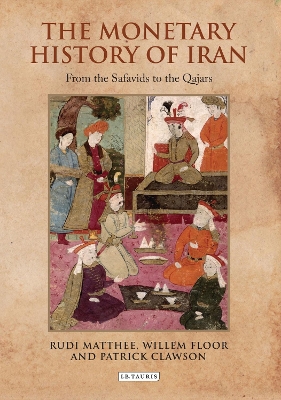International Library of Iranian Studies
2 total works
The Monetary History of Iran
by Rudi Matthee, Willem Floor, and Patrick L. Clawson
Published 1 January 2013
The monetary history of a country provides important insights into its economic development, as well as its political and social history. This book is the first detailed study of Iran's monetary history from the advent of the Safavid dynasty in 1501 to the end of Qajar rule in 1925. Using an array of previously unpublished sources in ten languages, the authors consider the specific monetary conditions in Iran's modern history, covering the use of ready money and its circulation, the changing conditions of the country's mints and the role of the state in managing money. Throughout the book, the authors also consider the larger regional and global economic context within which the Iranian economy operated. As the first study of Iran's monetary history, this book will be essential reading for researchers of Iranian and economic history.
I.B.Tauris in association with the Iran Heritage Foundation
The decline and fall of Safavid Iran is traditionally seen as the natural outcome of the unrelieved political stagnation and moral degeneration which characterised late Safavid Iran. "Persia in Crisis" challenges this view. In this ground-breaking new book, Rudi Matthee revisits traditional sources and introduces new ones to take a fresh look at Safavid Iran in the century preceding the fall of Isfahan in 1722, which brought down the dynasty and ushered in a long period of turbulence in Iranian history. Inherently vulnerable because of the country's physical environment, its tribal makeup and a small economic base, the Safavid state was fatally weakened over the course of the seventeenth century. Matthee views Safavid Iran as a network of precarious alliances subject to perpetual negotiation and the society they ruled as an uneasy balance between conflicting forces. In the later seventeenth century this delicate balance shifted from cohesion to fragmentation.
An increasingly detached, palace-bound shah; a weakening link between the capital and the outlying provinces; the regime's neglect of the military and its shortsighted monetary policies combined to exacerbate rather than redress existing problems, leaving the country with a ruler too feeble to hold factionalism and corruption in check and a military unable to defend its borders against outside attack by Ottomans and Afghans. The scene was set for the Crisis of 1722. This book makes a major contribution to our understanding of Iranian history and the period that led to two hundred years of decline and eclipse for Iran.
The decline and fall of Safavid Iran is traditionally seen as the natural outcome of the unrelieved political stagnation and moral degeneration which characterised late Safavid Iran. "Persia in Crisis" challenges this view. In this ground-breaking new book, Rudi Matthee revisits traditional sources and introduces new ones to take a fresh look at Safavid Iran in the century preceding the fall of Isfahan in 1722, which brought down the dynasty and ushered in a long period of turbulence in Iranian history. Inherently vulnerable because of the country's physical environment, its tribal makeup and a small economic base, the Safavid state was fatally weakened over the course of the seventeenth century. Matthee views Safavid Iran as a network of precarious alliances subject to perpetual negotiation and the society they ruled as an uneasy balance between conflicting forces. In the later seventeenth century this delicate balance shifted from cohesion to fragmentation.
An increasingly detached, palace-bound shah; a weakening link between the capital and the outlying provinces; the regime's neglect of the military and its shortsighted monetary policies combined to exacerbate rather than redress existing problems, leaving the country with a ruler too feeble to hold factionalism and corruption in check and a military unable to defend its borders against outside attack by Ottomans and Afghans. The scene was set for the Crisis of 1722. This book makes a major contribution to our understanding of Iranian history and the period that led to two hundred years of decline and eclipse for Iran.

